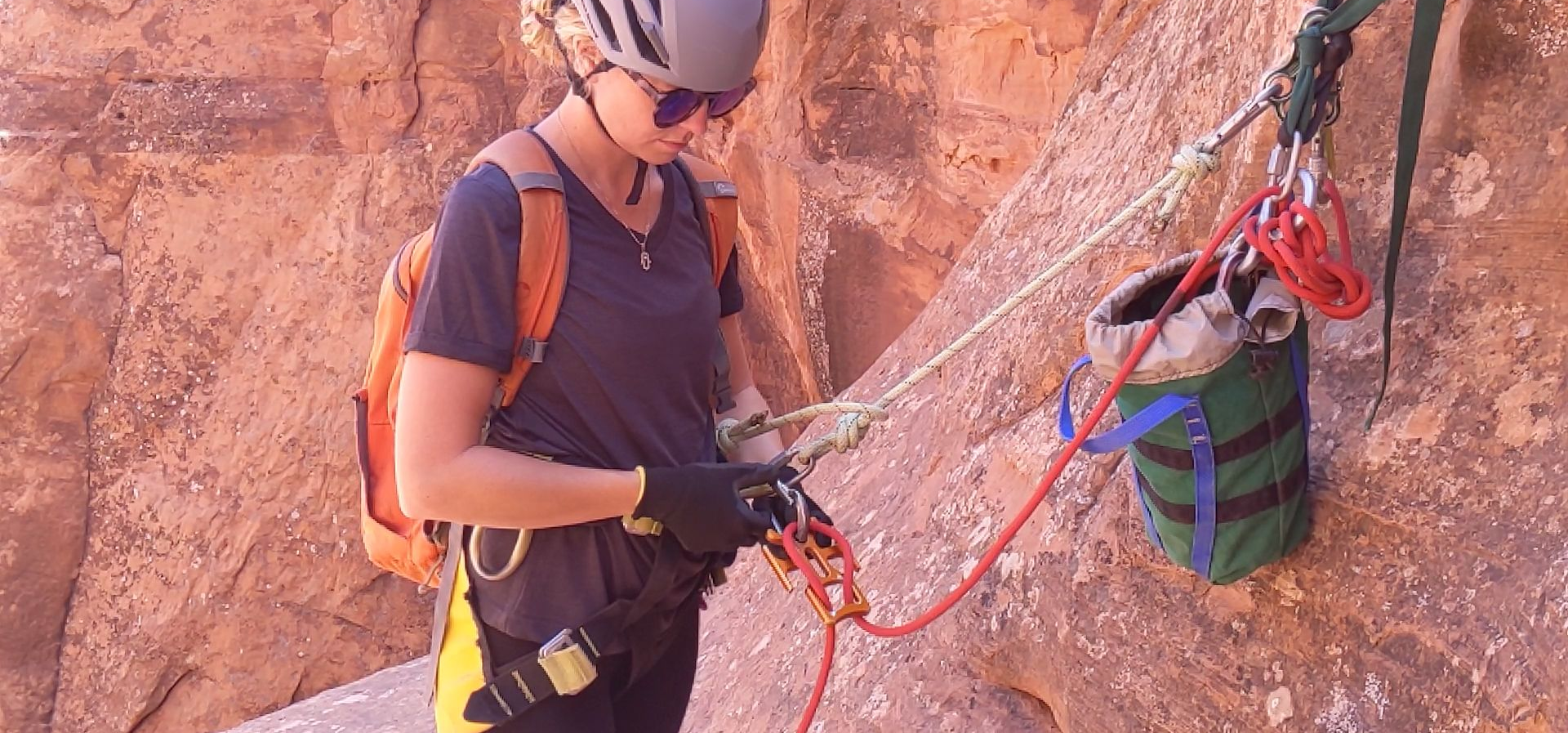CONTENT
10.2 DOUBLE CHECKING
TEAMWORK

OVERVIEW
As the saying goes: “old habits die hard”. As we begin to experience canyoning, setting good habits is of great importance for our further development. Of all healthy habits, a particular one is a favorite amongst the V7 Community: double-checking will ensure we continuously self-assess and control our technical decisions before committing to any action.
WATCH THE VIDEO LESSON
You can later review the content on the eBook below.
eBook: Double checking
Analysing the International Canyoning Accident Database - ICAD (See “Useful Links” for website information), we can conclude that the majority of accidents in canyoning activity result from human error. Therefore, it is of utmost importance that we find ways to reduce accidents resulting from human error and complacency.
Put simply, double checking is a step-by-step review of our choices in order to identify potential risks or forgotten steps before setting into action. A good question to ask oneself before committing is:
“What are the critical points that I must not overlook in this situation?”
By taking the necessary time to perform a double check we will avoid the development of bad habits and more: it will leave us with peace of mind if we find ourselves in stressful situations.
Double-check examples:
-
Checking that our harness main safety points (waist & leg buckles, ventral carabiners) are closed properly after putting on our gear at the top of the canyon
-
Performing a “squeeze check” on our descender’s carabiner before starting the rappel
-
Asking a teammate to repeat the information given to him/her prior to action (check for understanding)
-
Checking that we chose the correct rappel rope by transferring tension from lanyard to rappel rope before removing our lanyard from the anchor
-
Performing a weather check the day before and on the morning of the descent
-
And the list goes on to include every situation in the canyon…
SCENARIOS
Let’s analyse some situations where double-checking will help eliminate risks;
Scenario 1
We are facing a traverse line but we cannot see our teammate that is setting it up
→ We wait for visual or audible contact before clipping to the traverse line; in case of doubt, we attempt to contact our teammate before committing to using the traverse line; if we cannot make contact and we are still not sure if it’s safe for use, we stand-by without connecting to the traverse line
Scenario 2
We are at the anchor station with our descender set up to rappel, and we are about to disconnect our lanyard from the anchor
→ We check that we are connected to the correct strand of rope, then, we check our descender friction mode is adjusted accordingly, and that the carabiner that holds it is locked; we check with our teammate if there are any specific hazards during the rappel and how to overcome them; we repeat it to him/her to check that they have understood it; we then unclip from the anchor and initiate our rappel.
PERSONAL RESPONSIBILITY
As a responsible canyoneer, we must become our own auditor during a descent. This means being able to identify potential risks arising from poor technical choices or by overlooking important steps. In many situations (e.g. long descents or lengthy sections) it might be the case that the more experienced canyoneer is not immediately accessible to help us or to even point out potential issues, therefore our own procedural approach will ensure we maintain confidence and a certain degree of independence while descending a canyon.
In addition to checking ourselves, we should also look after our teammates, even the more experienced ones. With that said, we need to keep in mind that each person has their own process of double-checking, which often is not the same as ours. The etiquette is to observe their process and point out potential issues only at the moment when they have clearly overlooked them and they are about to put themselves into risk.
Example 1
A canyoneer is ready to start their rappel but is yet to unclip their lanyard from the anchor; we notice their descender carabiner is unlocked.
→ We wait to see if they have performed their own double-check, and only then point it out to them before they unclip their lanyard from the anchor.
Example 2
A canyoneer is ready to connect onto a traverse line that is not yet fully set-up.
→ We wait until the canyoneer is clearly ready to start the traverse and point it out to them that it is not safe to do so before the person rigging it gives the “all clear” sign.
SUMMARY
Developing a processual approach to our own safety is a very good habit worth cultivating. A great way of developing this process is to mentally repeat the steps that must be performed, activating our long-term memory and bringing the important bits back to the moment. We master our safety: we master our double-check!
inging the important bits back to the moment. We master our safety: we master our double-check!


























 被折叠的 条评论
为什么被折叠?
被折叠的 条评论
为什么被折叠?








